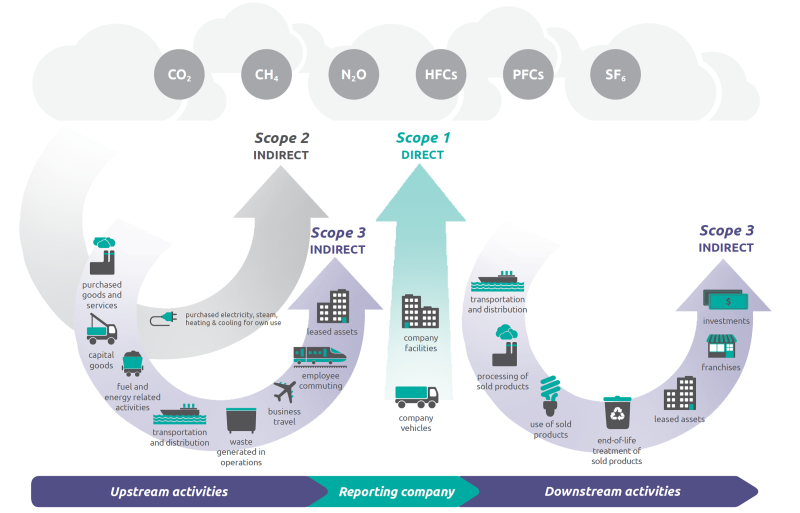GHG Protocol (Greenhouse Gas)
The "Greenhouse Gas Protocol" or "GHG Protocol." It's a widely recognized and standardized framework for accounting and reporting greenhouse gas emissions. The GHG Protocol was developed by the World Resources Institute (WRI) and the World Business Council for Sustainable Development (WBCSD) and provides guidelines for organizations to measure and manage their greenhouse gas emissions, including the categorization into Scope 1, Scope 2, and Scope 3 emissions. It has become a global standard for corporate greenhouse gas accounting and reporting.
The terms "Scope 1," "Scope 2," and "Scope 3" are not specific to greenhouse gases (GHGs) alone; they are a framework used in sustainability reporting to categorize different types of emissions and environmental impacts. While they are often associated with GHG emissions, they can also be applied to other environmental and sustainability metrics. Here's a brief overview:
Scope 1: These are direct emissions from sources that are owned or controlled by the reporting entity. This can include emissions from on-site combustion of fossil fuels, emissions from owned vehicles, and other sources directly associated with the organization's operations.
Scope 2: These are indirect emissions associated with the consumption of purchased electricity, heat, or steam. They result from activities that are not directly owned or controlled by the organization but are part of its energy consumption.
Scope 3: These are a broader category of emissions and impacts that are indirect and occur in the value chain of the reporting entity. Scope 3 emissions include a wide range of impacts, such as emissions from purchased goods and services, transportation and distribution, employee commuting, waste generation, and more.
While Scope 1 and Scope 2 emissions are typically related to GHG emissions (carbon dioxide, methane, etc.), Scope 3 encompasses a wider array of environmental and sustainability factors, including GHG emissions but also other aspects such as water usage, resource depletion, and social impacts.
